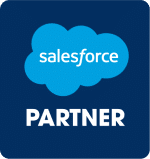In recent blogs, we’ve been exploring the subject of retail media networks (RMNs) – everything from what exactly they are, to the challenges they’re facing, and the problems they can help solve.
When it comes to developing a new RMN that is capable of both delivering incremental revenue and providing the best possible return on ad spend (ROAS) for its advertisers, a customer journey that is as seamless as possible is key – especially in today’s competitively crowded marketplace.
Here’s how to build a seamless customer journey for advertisers in your RMN, in just eight simple steps (one for each key stage of the journey).
- Awareness & Acquisition
Connect your sales and marketing functions with valuable customer data to acquire and retain more advertisers.
From the very start of your customers’ journeys, they’ll be on the lookout for something, whether it’s a service or a product. In order to find their perfect solution, they’ll be using various channels, from online search sites and television to word of mouth. By gathering customer data from different sources and analytics, such as how they engage or interact with your website, you can build up a detailed customer profile. Your marketing team can help here – using tools like Marketing Cloud Account Engagement (FKA Pardot) and Google Analytics, they can track website traffic, and find out the number of potential customers engaging with your website. The more detail the better, as you can also target a lookalike audience with similar demographics, interests, and behaviours – all whilst acquiring new advertisers.
- Customer Onboarding
Onboarding can set the tone for the relationship you have with your customer – not only can it keep them engaged with you as a supplier, but it can give them a reason to keep coming back time and time again. From signing up a new client, to keeping them engaged, and sending them follow-up emails, it’s important to keep demonstrating value, and reminding customers why they decided to sign up with you in the first place. Onboarding is genuinely crucial to maintaining the rest of the relationship, too. According to the latest ABBYY State of Intelligent Automation Report, around 90% of companies regularly lose potential customers during their digital onboarding process.
If you’re smart about it, during the onboarding process, you can begin developing a customer profile that allows you to build a singular 360-degree view of all of your customer’s data as it is collected. This profile will begin with their basic information and will develop over time to include everything from their marketing preferences to their purchase history. By understanding their behaviour, companies can also get a better understanding of what a customer is looking for and what else they’re interested in – in other words, if there are any upsell or cross-sell opportunities with them. By capturing as much information as possible at the onboarding stage, you can begin the process of building loyalty and engagement with your customers, thus increasing your Customer Lifetime Value (CLV).
RMNs looking to make sure they don’t lose out on new clients should take the time to design a client onboarding plan – a detailed plan to follow that can help to make the process run as smoothly as possible, avoiding any snags and applying learnings from previous mistakes. They should also consider investing in tools like Computer Telephony Integration (CTI), which can link a computer with a telephone system to provide more detailed information on your clients whenever they call your team, adding more valuable data to that single, 360-degree customer view we mentioned earlier.
- Opportunity, Order & Contract Management
Give the customer all of the information that they need as promptly as possible, and ensure they understand the value of the contracted products and services.
It’s at this stage of the process that the customer will decide if they want to use your services, and potentially sign a contract. It’s important to ensure the contract meets their needs, and that they have accurate and up-to-date information on everything from your inventory and your prices to the expected deliverables. By enhancing the quality of your data as much as possible, you can improve customer satisfaction later down the line. There are plenty of tools out there that you can use to improve your clients’ experience and save you time and money simultaneously – from pipeline management software to quote generation solutions. Our partners at Salesforce offer an array of management tools for every step of your advertising campaign, all of which can be connected and automated for a seamless experience. Meanwhile, by using tools like DocuSign, you can speed up transactions and get contracts signed and sent securely – even if both parties are on opposite sides of the planet!
- Campaign Management & Provisioning
By carefully planning, provisioning, orchestrating and optimising omni-channel campaigns from start to finish, you can reduce costs and the chances of human error.
A campaign typically involves having a lot of plates spinning, from content strategy to market analysis. By aligning campaign service-level agreements (SLAs) with your customers, you can set clear expectations, and ensure that no issues arise between either you and the customer or between teams in your company, reducing the chance of human error. Through process automation and system integration using tools like Salesforce and Mulesoft, you can help bring everything together in one place.
- Revenue Actuals & Reconciliation
Real-time visibility on actual revenue is increasingly important in today’s climate, and month-end reconciliation is vital to ensure your balances are correct and your accounts are both accurate and complete. While it’s important, though, it can take up a lot of time – time that could otherwise be put to better use optimising more campaigns. According to a study by PWC, 30% of a company’s finance team’s time is spent manually checking accounts and performing reconciliations.
By automating these processes, you can cut the time spent on month-end reconciliation from weeks to days. This would in turn increase productivity, freeing up your team to do other tasks, and give you more up-to-date insight into your finances.
- Billing & Accounting
In today’s digital world, billing and payment issues can drastically affect the customer experience. According to research by Barclaycard, 89% of businesses believe that it’s ‘very important’ or ‘fairly important’ for their customers to have a seamless payment journey. Not only do customers expect a personalised payment experience, but they also want to be able to pay via different channels or methods. But it’s not just about optimising the payment experience – RMNs should also concentrate on streamlining their billing process, especially across omni-channel campaigns, where costs can arise from multiple channels. Timely and accurate billing is important for business growth, but it can also help to build customer trust. By automating your billing with tools like QuickBooks and ChargeBee, you can save time sending invoices and reminders, reduce the number of times you have to chase them up for payment, and build better working relationships with your customers.
- Reporting & Business Intelligence
Data reports (collected through tools like Salesforce’s Datorama, Tableau and CRM Analytics) can provide your customers with greater visibility and a clearer understanding of key performance indicators for their campaigns. Whether they are running an awareness campaign based on impressions, a traffic campaign focused on clicks and click-through rate (CTR), or a sales campaign looking for conversions, your customers require access to a great deal of data to track and improve their marketing efforts.
By tracking their campaign KPIs, your customers can gain a better understanding of what is and isn’t working for them, as well as where they might be falling short of their objectives. These insights are key to making strategic decisions regarding campaigns, budgets and targeting.
These insights are pretty time-sensitive, too. After all, the longer they leave an ineffective campaign running, the more budget your customers are wasting. By providing real-time reports and automated insights notifications, you can help your customers to make rapid changes, meet their objectives and minimise wasted advertising spend.
- Self-Service
According to a survey by Statista, 88% of customers expect brands in every industry to operate some kind of self-service portal. By giving customers an online portal with self-service options such as managing and booking campaigns, downloading accurate invoices, paying bills and getting answers to FAQs, you can help them to avoid lengthy phone calls to call centres, and make them feel as though the power is in their hands at the same time. Self-service solutions, like ADvendio’s self-service technology, can also help to increase advertising revenue and create more efficient campaigns. They can automate everything for campaigns of all sizes, including ad operations, creative uploads, payment collection, and invoice downloading, saving time for both you and your clients. By integrating these kinds of tools into your platform, you and your customers can easily customise campaigns, and you can make sure all their needs are being met.
By ensuring your customers have access to important data like campaign performance, you can also empower them to make the necessary adjustments to their ads to maximise their returns and achieve their marketing objectives. Meanwhile, you’re saving time and money for your customer service teams. It’s a win-win!
—
Setting up an RMN is incredibly complex, and even once it’s been built, your worries aren’t over. Advertisers will only want to buy media space from providers who have a rich, vast source of connected data; can help them to target their ideal audience; and ensure they deliver a high ROAS.
The simple key to ticking all three of those boxes is a seamless customer journey. Customer loyalty is crucial in today’s consumer-centric market, and enhancing every step of their journey can help you to better understand and adapt to each advertiser’s unique requirements. Whether a brand or an agency, ensuring a seamless customer journey for your advertiser doesn’t just add value for them, it also helps you to save time and money throughout the ad management process and ensure you keep as much of that advertising revenue in your business’ pockets as possible.
—
Are you a CEO, ops director or head of media looking to set up a retail media network for your organisation? Or are you working in an existing retail media team and looking for ways to better serve your advertisers and increase revenue?
Look no further.
Whether it’s through automation, process efficiencies or enhanced analytics capabilities, here at Trigg Digital, we’ve developed a killer retail-media team with all the skills and industry knowledge they need to help set up, scale up or improve your retail media network.
Get in touch to find out more…
+44 203 239 8492
hello@triggdigital.com
- ASOS Media Group Taps Trigg Digital as a Strategic Salesforce Partner - April 22, 2025
- Documill and Trigg announce strategic partnership to simplify the complexity of document management - February 13, 2025
- #TriggThoughtLeaders – Retail Media Deep Dive with Chris Quinn, Co-founder, ProOps Consulting - February 4, 2025



